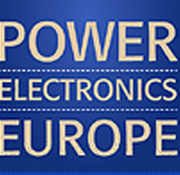Power Electronics Change the Automotive World
This article was originally published as an editorial in the November issue of Power Electronics Europe by editor Achim Scharf.
Electronica 2016 in Munich is an example how electronics, particularly in the automotive industry, will change the world. Moving toward a longer-term goal, vehicles are on a path to become fully electric, reducing fossil fuel usage. Global demand for semiconductors for automotive electronics was worth nearly 35 billion dollars in 2014, roughly ten percent of the global semiconductor market. The automotive semiconductor market is forecast to grow nearly twice as fast as the overall semiconductor industry over the next five years, due to increasing electronic content in vehicles. The power electronics market for EV/HEV will reach $13 billion by 2021.
A typical mid-class car today contains a semiconductor content of around $350, and in electric vehicles this content will be doubled. Though a lot of ECUs for motor management and the gearbox can be eliminated, this will be offset by more power semiconductors and the efforts for electrical power and battery management. But a first step towards automotive electrification respective hybridization is been seen in the move to a 48 V board net. By 2020, automotive 48 V systems will help reduce emissions by up to 15 percent, improve fuel consumption, capture energy typically lost while braking, and provide torque in the low RPM range for start-stop mild hybrids. The 48 V power net is needed to manage the next generation of energy efficient electrical systems that require more power than available with the existing 12 V subsystem. To reduce weight, many traditionally mechanical/hydraulic systems such as power steering, roll stabilization, heating, and air conditioning will be converted to 48 V electrical drive. A new electric turbocharger will provide on-demand horsepower and torque, enabling the use of smaller more efficient combustion engines without sacrificing drive ability. A high-power starter/generator will replace the 12 V alternator, reducing noise and vibration during engine starting while allowing regenerative braking to recapture up to 4x more of the available kinetic energy. The 12 V bus and 12 V lead-acid battery will handle the lighter loads, including ignition, interior lighting, navigation and audio systems.
Another very interesting market for the semiconductor industry is the trend towards self-driving. The Diesel discussion increases the pressure on the automotive industry to develop not only electric, but also self-driving or autonomous vehicles. The way towards self-driving can be split into four levels with level 1 incorporating front radar, level 2 incorporating ADAS, level 3 meaning semiautonomous and level 4 meaning fully autonomous – ten years from now. Level 3 will double the semiconductor content of a car up to $700. Radar and LiDAR are the most promising technologies in the future, according to industry. Light Distancing and Ranging (LiDAR) sensors have recently begun to emerge in automotive sensing applications. Initially LiDAR sensors were used to generate three-dimensional digital topographical maps used for landscape mapping and navigation software. Because LiDAR chases the speed of light for improving resolution, Gallium Nitride (GaN) power transistors, with about a 10 times advantage in switching speed, have been used almost exclusively in these mobile applications. The imaging speed and depth resolution has become so good using eGaN FETs that manufacturers experimenting with autonomous vehicles are using similar LiDAR sensors for driverless navigation systems. In addition, several automakers are incorporating eGaN FET-based LiDAR sensors in their vehicles for general collision avoidance and blind spot detection. LiDAR has a very exciting future, since it is the detection and guidance system being used for driverless cars. Also the evolution – from an internal combustion engine, to hybrid vehicles, plug-in hybrids, and, finally, to fully electrically powered cars – is potentially a very large market for GaN technology. In the future, as electric vehicles gain acceptance and become more ubiquitous, motor controls for the powertrain has the potential to become an enormous market for GaN transistors. The issue among the competing technologies – GaN, SiC and IGBT – will be the cost. The automotive industry is undergoing a technological disruption and is taking advantage of high-performance gallium nitride technology, the CEO of one of the GaN vendors expects.
GaN is the logical technological successor to Silicon for power conversion and analog devices, and possibly also for digital components as well. We are away by the factor of 800 of the theoretical GaN limits, this technology is able to be integrated up to the level of NMOS. A leading Taiwanese foundry now offers both 100 V and 650 V GaN foundry service in a 6-inch fab. The idea of bringing GaN from the power semiconductor market to the much bigger analog IC market is of interest of several other players, too. Using this 650 V GaN-on-Silicon process technology, a UK-based company has designed a monolithically integrated half-bridge serving as a core for travel notebook adapters – the exceptional performance of GaN transistors allow for more efficient and compact power adapter designs that meet today’s market demands, the company stated. The new technology allows a reduction in the size of power electronics by up to 50 percent, enabling a typical 45 W adapter design today to fit into a 25 W or smaller form factor. This reduction in size will enable true universal chargers for mobile devices. And in research a V-shaped channel demonstrated record GaN threshold voltage of 1.7 kV plus a remarkably low on-state resistance.
Achim Scharf
PEE Editor


